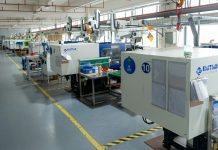Want to build a more sustainable business and boost your bottom line?
If you’re like most business leaders, you’re asking yourself that same question. Balancing the rising consumer demand for sustainability while maximizing profits is a constant struggle.
But what if you could align your demand planning processes with your environmental goals?
With 61% of consumers willing to pay 9.7% more for sustainable products, the business case for sustainable demand planning is undeniable.
Here’s the thing…
Traditional demand planning methods focus on producing and carrying excess inventory, which leads to waste and pollution. But new generation demand planning solutions can help you build a sustainable business model that your customers and investors will love.
In this article, we’ll explore:
- Why Sustainable Demand Planning Is Critical Now
- How Demand Planning Reduces Environmental Impact
- The Business Case for Green Supply Chain Planning
- The Technologies Driving Success
Why Sustainable Demand Planning Is Critical Now
Sustainability is no longer an optional business practice. It’s a critical component of any successful modern business.
Here’s why: Consumer awareness of the impacts of climate change is at an all-time high. 85% of consumers report experiencing climate disruption in their everyday lives, and they want action from business.
More importantly, they’re actually putting their money where their mouth is. The consumer demand for sustainable products is the highest it’s ever been.
But there’s another reason why sustainable demand planning is critical right now…
Supply chain disruptions are the new normal. The average number of disruptions per year has gone up by 31%, with major disruptions hitting every 3.7 years on average. It takes about 2-3 years to fully recover from these events.
Sustainable demand planning helps businesses create more resilient supply chains by lowering dependence on at-risk resources and building strategic buffers against future disruptions.
How Demand Planning Reduces Environmental Impact
Traditional demand planning systems are based on rule of thumb assumptions and rudimentary historical sales data. The results are huge excess production, over inventory, and unnecessary waste.
New generation Netstock demand planning software transforms the traditional approach with AI and machine learning models. You can create precise, dynamic forecasts using every data point available to you. This kind of forecasting is the secret sauce that powers green supply chains.
Let’s break it down:
- Reduces Overproduction – Overproducing 20% “just in case” is a thing of the past with accurate forecasting
- Minimizes Waste – Accurate forecasts means less rush orders, emergency airfreight and obsolescence
- Optimizes Inventory – Right-sizing inventory means less energy consumption and obsolete stock
- Improves Resource Efficiency – Precision helps you squeeze more value out of every raw material
The environmental impact you can achieve by simply reducing overproduction by 10% is astronomical. This is the power of modern demand planning.
Sustainable demand planning also helps you identify the best sustainable sourcing opportunities and plan transportation more efficiently.
The Business Case for Green Supply Chain Planning
Let’s get to the best part of sustainable demand planning. It’s not just good for the planet – it’s great for your business too. In fact, companies that implement sustainable supply chain practices are reaping huge benefits.
Consider these facts:
- Cost Reductions – Sustainability initiatives deliver typical operational cost reductions of 15–25%
- Revenue Growth – Sustainable businesses have the potential to charge premium prices to green consumers
- Risk Mitigation – Green supply chains are more resilient to volatility and shocks
AI-enabled sustainable supply chain management has produced impressive results so far. Companies implementing it are seeing:
- Logistics costs reduced by 15%
- Inventory reduced by 35%
- Service efficiency increased by 65%
Businesses leaders aren’t acting fast enough to build green supply chains, but it’s changing. Sustainability-related regulations are tightening every year. Companies that proactively make sustainability a key part of their demand planning strategy will have a huge edge over those who don’t.
Technologies Driving Success
What does the future of sustainable demand planning look like? Let’s take a peek into the technology trends that are making it possible.
- AI and Machine Learning for super-accurate demand forecasts. Machine learning can process hundreds of data variables simultaneously to create data-driven forecasts
- IoT Sensors for real-time data on inventory, energy usage and more. This sensor data helps optimize supply chain operations
- Digital Twins that help businesses simulate and optimize different sustainability scenarios. You can stress test the environment while keeping real-world operations smooth
These are the kinds of technologies that create powerful, sustainable supply chain systems that truly balance environmental and profitability goals.
Implementing Sustainable Strategies
So, how can you get started on sustainable demand planning in your own business? Let’s break down how companies are making the transition.
- Start with Data – The first step is to integrate all your data sources: internal ERP and CRM systems as well as external data sources like weather. The more complete your data picture is, the more accurate you’ll be able to plan
- Collaborate – Sustainable demand planning has to involve a diverse range of stakeholders and functions in the business. Sales, marketing, operations, and of course sustainability departments all need to be involved and have a voice
- Plan for Multiple Scenarios – Scenarios help businesses plan for the unexpected. You need to be able to simulate different outcomes such as sourcing from green suppliers
The most successful companies make a point of starting small and scaling incrementally. Pick a product line or SKU, perfect the process and then roll it out across the business.
Overcoming Implementation Challenges
The truth is that implementing sustainable demand planning can be challenging for any company. Here are the most common pain points and the proven solutions to overcome them.
- Data Quality Issues – This is a universal problem for most companies as they start on their sustainability journey.
- Solution: Invest in data cleansing tools and processes. Focus on critical data sources and scale out gradually
- Resistance to Change – Staff are naturally resistant to new and unfamiliar processes.
- Solution: Start small with pilot programs that are quick to demonstrate clear value
The companies that succeed with sustainable demand planning treat it like any other business initiative with clear goals, metrics, and investment.
Measuring Success
If you’ve already started on your sustainability journey and implemented sustainable demand planning, how do you know if you’re winning? Successful businesses track the following metrics:
- Environmental Metrics – Carbon footprint reduction, waste eliminated, energy efficiency
- Financial Metrics – Cost savings, revenue increases, ROI on sustainability
- Operational Metrics – Forecast accuracy, inventory turnover, supply chain resilience
The most advanced companies create real-time dashboards that track both environmental impact and business value.
Future Trends
The future of sustainable demand planning is rapidly evolving. Businesses are planning for product returns, recycling, and the circular economy.
Advanced systems are now modeling climate change risks in forecasts, while AI-based systems are automatically ranking suppliers based on their environmental impact.
These are just a few of the trends that point to a sustainable future for demand planning.
Wrapping Up The Future
Sustainable demand planning is taking the world by storm. By focusing on data-driven forecasting and eco-friendly operations, you can build a more profitable, efficient, and resilient business model that customers and investors love.
Consumer demand for sustainable products and services has never been higher. In fact, consumers have a 9.7% greater willingness to pay for sustainable goods.
ESG-focused investors are also backtracking from companies without clear environmental goals. The race is on to the future of sustainable demand planning.
Successful businesses know that they need to start right now by building strong partnerships with the right technology providers, focusing on data integration and creating cross-functional collaboration.
Sustainable demand planning isn’t just for environmentalists anymore. It’s for companies that want to succeed in the long term.
The future belongs to the businesses that can best balance profitability with sustainable operations.








